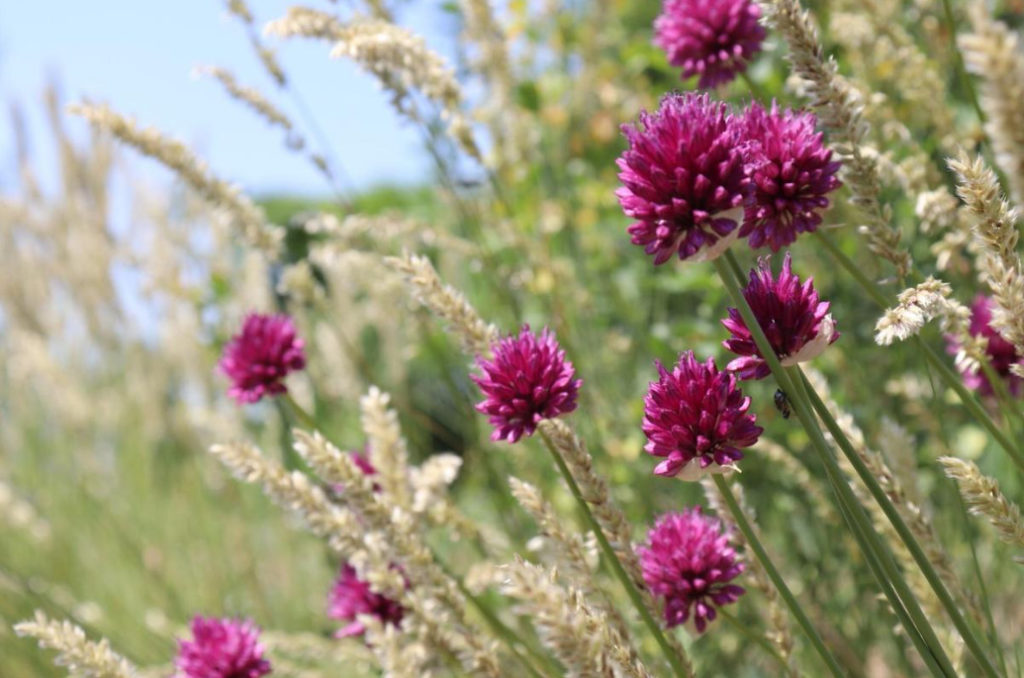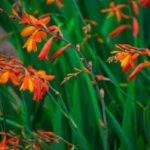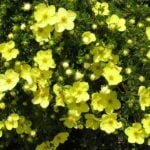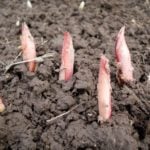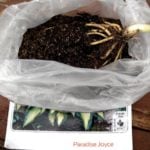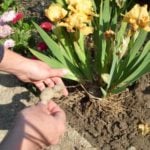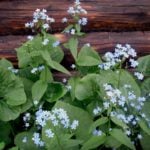The genus onion (Allium) has over 900 species, and many of them have long taken root in our suburban areas, where they are cultivated as food or ornamental plants (and sometimes combine these “roles”).
But onions grow not only in beds — in the Northern Hemisphere, numerous wild species are widespread, which are found in forests and meadows, in the steppes and alpine foothills. Actually, it was from there that they came to our vegetable gardens — it’s just that sometimes we don’t even realize that we are growing cultivated “savages”.
Of course, within the framework of one article it will not be possible to even just mention each species, so let’s talk only about the most famous and often found in natural conditions.
Wild onion
Probably the most popular wild onion. Even those who have never met it and have never grown it have heard about it. But here’s what’s interesting: under the name wild onion, it turns out that different botanical species are hiding in different localities: Allium ursinum, Allium victorialis and Allium microdictyon.
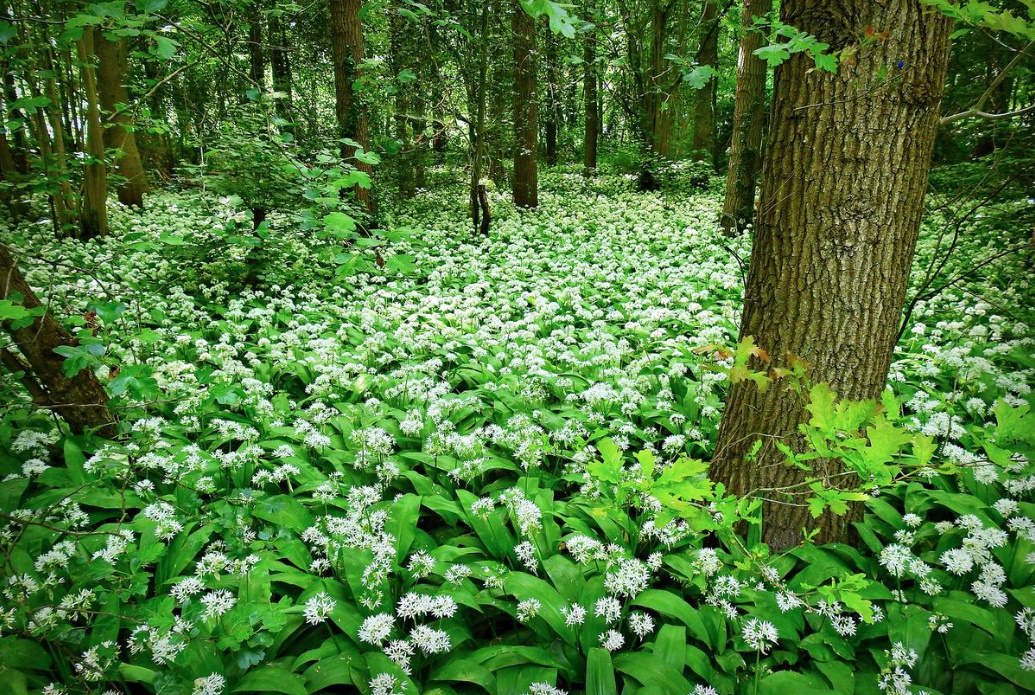
Allium ursinum
Allium ursinum, also known as wild garlic, is a species widely distributed in Europe and Ukraine. However, mass harvesting has already put this plant on the verge of extinction.
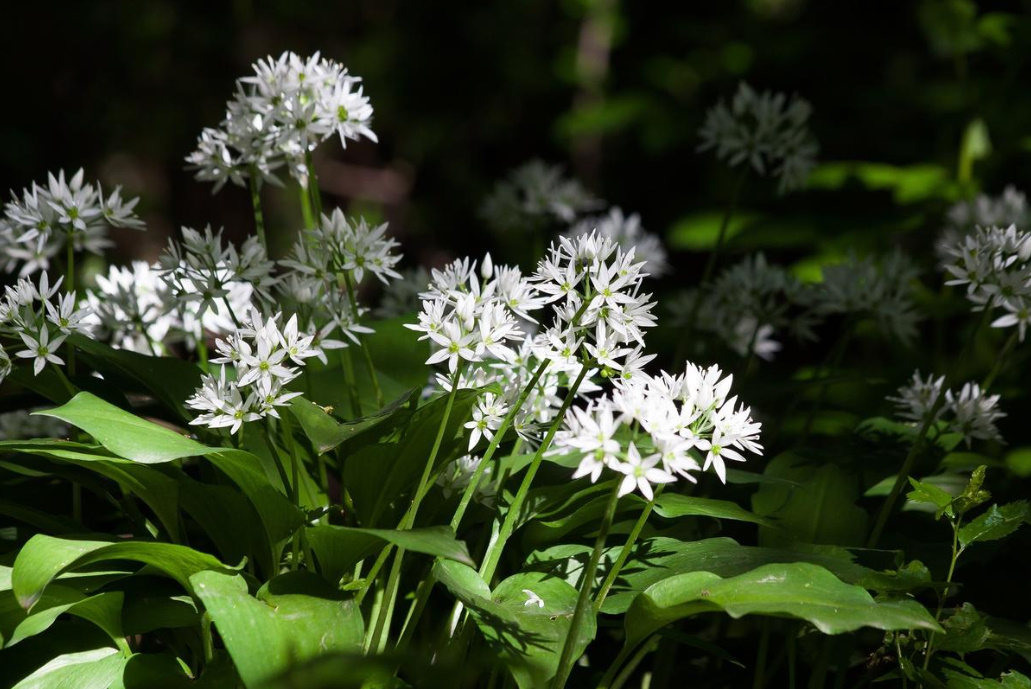
It is a valuable food and medicinal plant that grows in moist shady forests or along the banks of rivers. Allium ursinum reproduces mainly by seeds and in favorable conditions can quickly occupy vast spaces.
The culture is cold-resistant; the leaves grow in early spring, they are collected in April-May, before flowering. Wild garlic blooms in May-June. When harvesting a forest “harvest”, you need to be careful: an inexperienced collector can easily confuse the leaves of Allium ursinum with Veratrum or Convallaria, and this is fraught with poisoning.
Allium victorialis
The leaves of Allium victorialis are similar to medveAllium igsip, but the inflorescences of these species can not be confused:
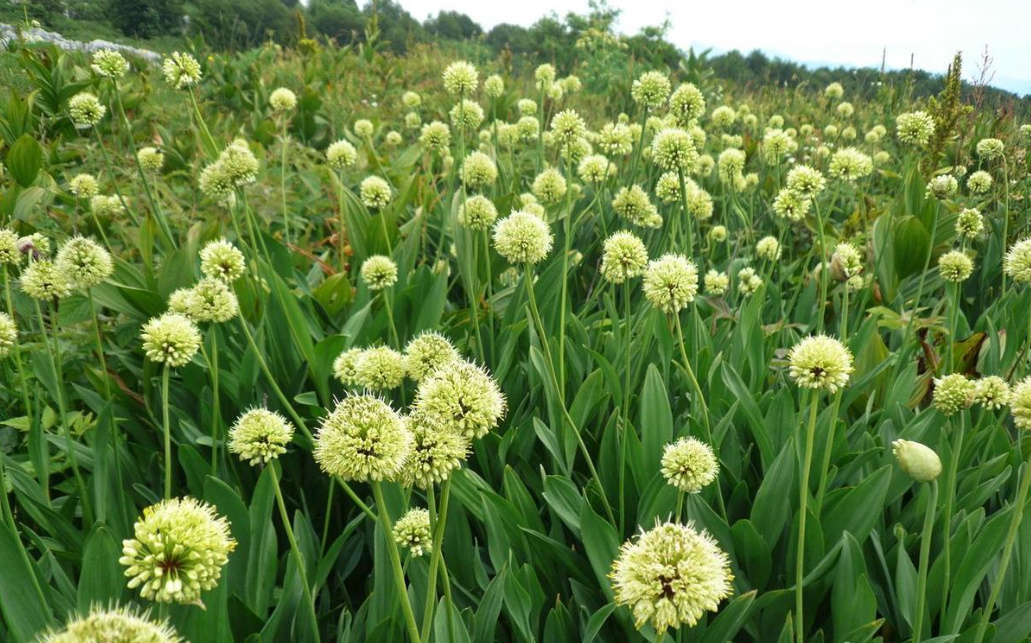
Allium victorialis grows in Central and Southern Europe, Mongolia, Kazakhstan, India, China, Japan. Prefers fertile, well-moistened soils in coniferous and deciduous forests, meadows and forest edges.
Plants of this species are very durable, but they do not tolerate trampling at all and in places have already appeared on the verge of extinction.
Allium microdictyon
This species can be found in moist forests and meadows of the subalpine belt in Mongolia and Eastern Kazakhstan.
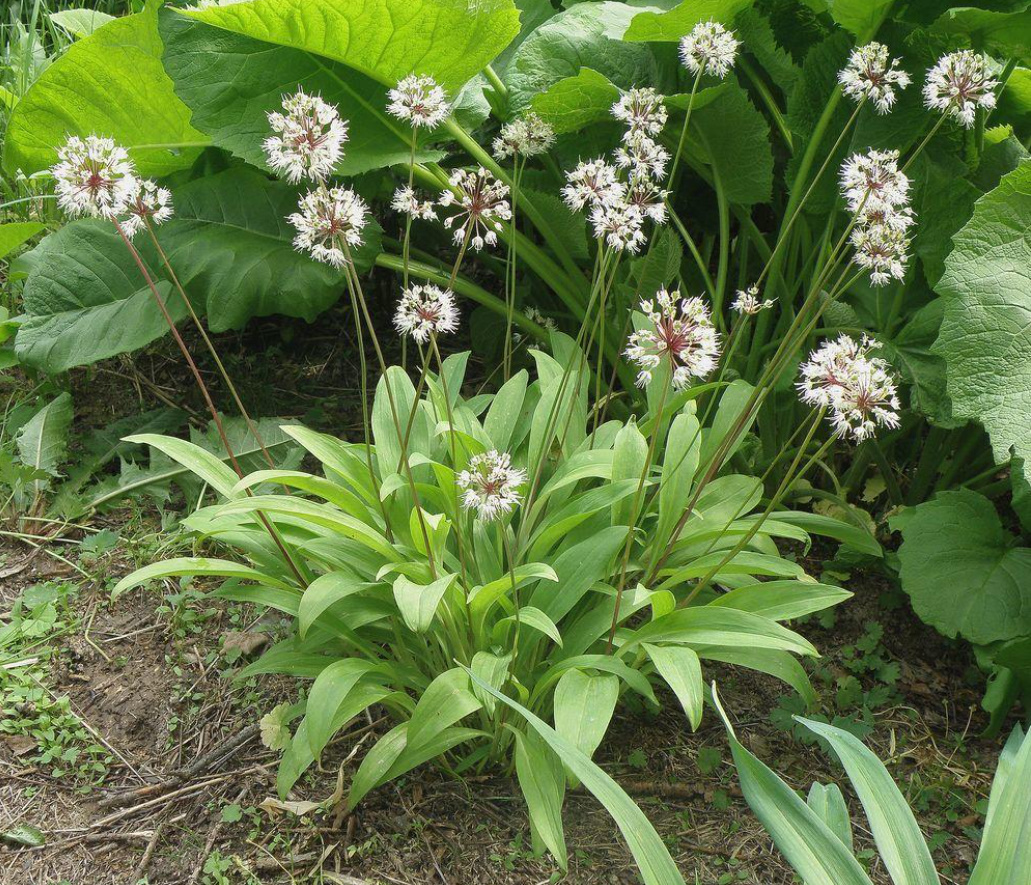
Greenery grows early — in the third decade of April. Young foliage is rich in vitamin C and is eaten both fresh and after cooking. However, by the end of May, flower stalks are formed, the leaves become coarser, their taste deteriorates. In early June, Allium microdictyon blooms.
Allium fragrant
This plant has a lot of names: Allium ramosum, A. odorum, wild onion, fragrant, Chinese, garlic, Tatar, field garlic, jusai. This drought-resistant crop is found in mountainous and steppe areas, in the dry meadows of Altai, the Far East, China and Mongolia.
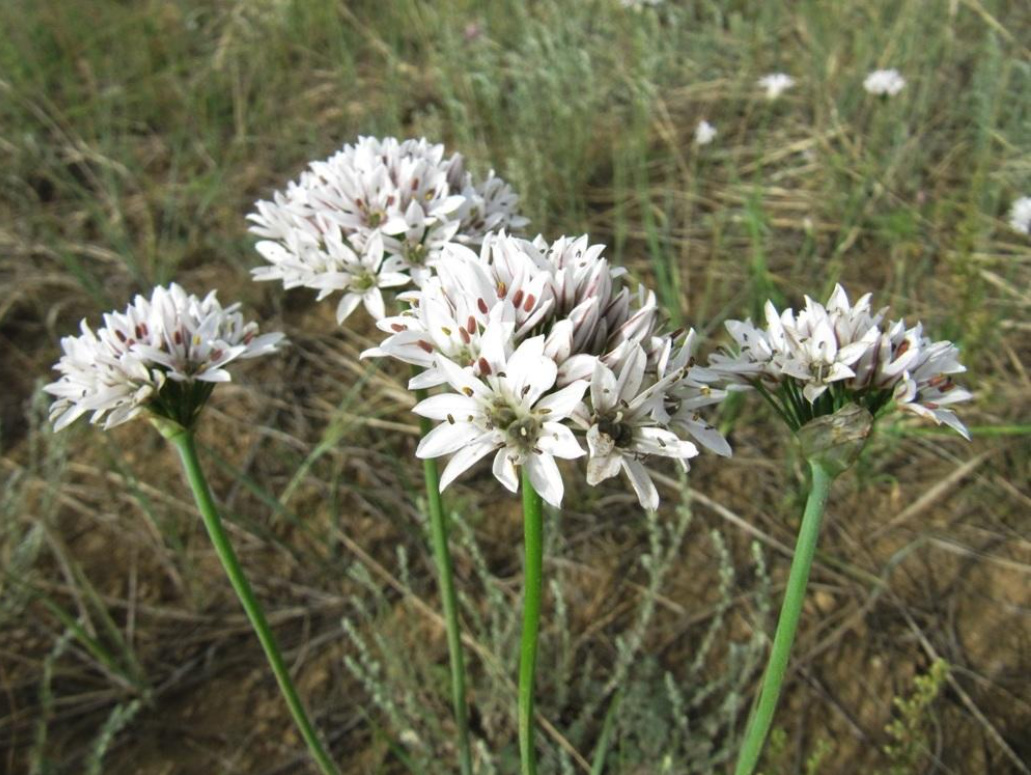
The name “fragrant” onion was given for the subtle pleasant aroma of flowers, and it was called branchy for its abundant growth. The distinctive features of the species are late (in July—August) and prolonged (about 1.5 months) flowering, long (before frost) vegetation. Narrow flat leaves with a slightly sharp garlic taste do not get rough, they can be eaten throughout the season. The healing properties of the plant are also known, it is often used in recipes of Tibetan and Chinese medicine.
Allium schoenoprasum
This garden plant, familiar to many summer residents, can be found in meadows and river valleys in the Caucasus, the Far East, it also grows throughout Europe, Central Asia and North America.

Allium schoenoprasum is undemanding, hardy and reproduces well by seeds, giving abundant self-seeding, so in favorable conditions it grows rapidly. It is valued as a source of early vitamin greens, a wonderful honey plant and a medicinal plant. Perfectly caught on in the culture.
Other wild onion species
Among the less well -known and not so widespread wild species , it is worth mentioning:
- Allium angulosum — it grows in the meadows of Europe;
- Allium nutans is a plant of steppes and rocky slopes of Central Asia;
- Allium oleraceum — grows in meadows, shrubby thickets and steppes throughout Europe;
- Allium altaicum — found on calcareous rocks, rocky scree and China;
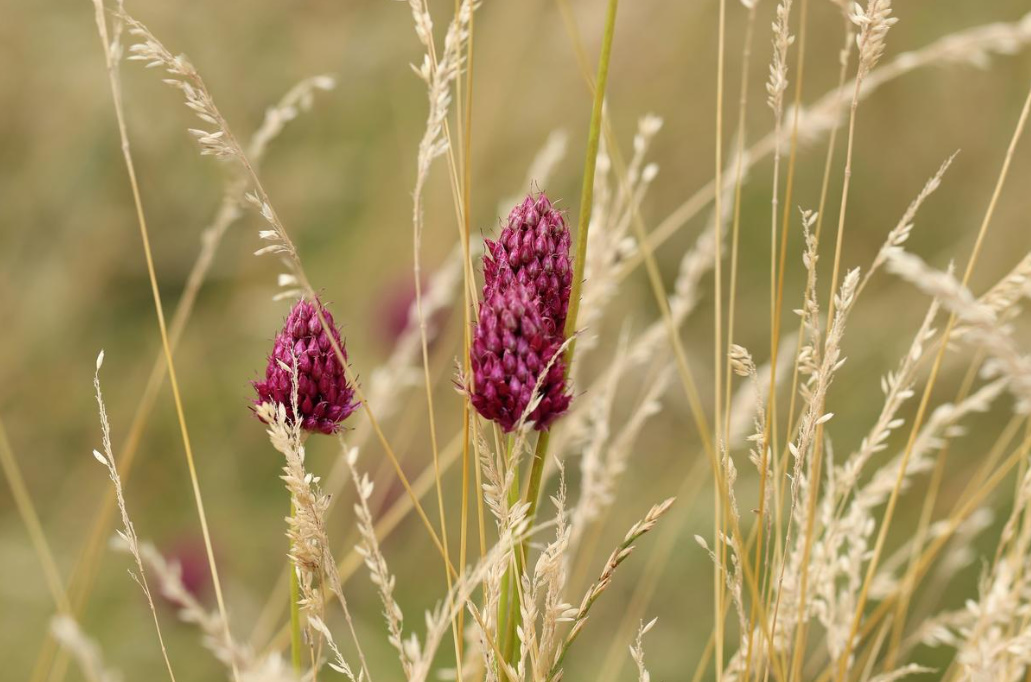
- Allium sphaerocephalon — lives in the steppe zone of Europe and the Caucasus;
- Allium stellerianum — it can be seen in Mongolia.
All these species are edible, most of them are successfully cultivated, and some are valued not so much for their taste as for their decorative properties.
And what wild types of onions can be seen in your area?
